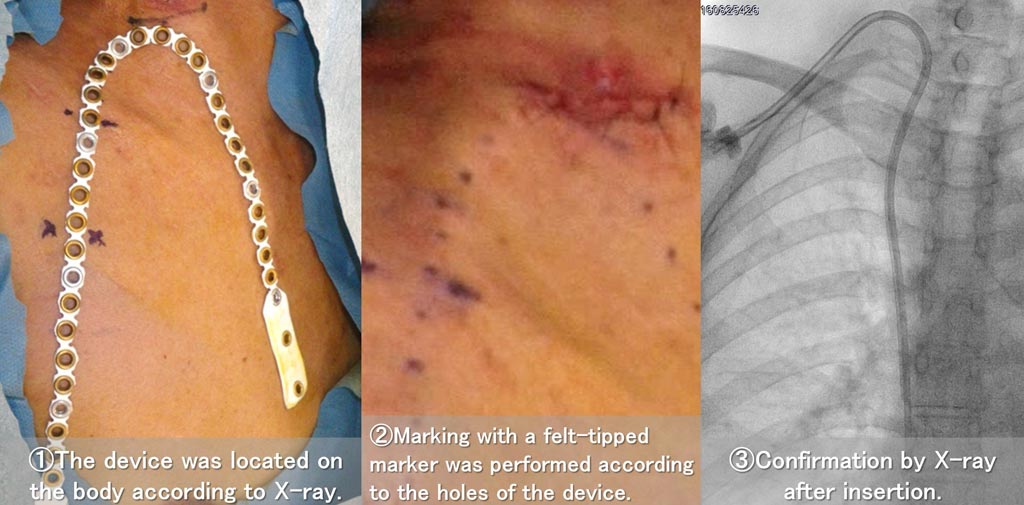Insertion Support Assists Hemodialysis Catheter Placement
By HospiMedica International staff writers
Posted on 21 Aug 2018
A new study describes a device that guides accurate placement of a tunneled cuffed catheter (TCC) in hemodialysis patients for whom other options are unsuitable.Posted on 21 Aug 2018
Developed by researchers at Okayama University (Japan), the new device is a bendable ribbon made of expanded polytetrafluoroethylene (ePTFE) with eyelets spaced one centimeter apart; the eyelets allow markings to be placed on the patient's body with a felt-tip pen. The device is laid on the skin surface so as to mark both catheter entry and exit points before the actual catheterization. The ePTFE ribbon is chemically processed so as to enable it to maintain its plasticity and shape when being autoclaved.

Image: An insertion support ribbon facilitates TCC placement (Photo courtesy of Okayama University).
In a test study, ten adult hemodialysis patients (six men, mean age 71.3 years) underwent TCC insertion at Shigei Medical Research Hospital (Okayama, Japan). The ePTFE device was placed with the aid of X-ray imaging: the tip of the device, for marking the TCC entry site, was laid so that it overlapped with the right cardiac atrium. With the help of the markings made on the patient's body, physicians inserted the TCC within an error of about one cm. Patients were observed for two months, during which there was no catheter replacement needed. The study was published on May 3, 2018, in The Journal of Vascular Access.
“Accurate placement of a tunneled cuffed catheter is necessary for safe hemodialysis, but placement is sometimes difficult because of individual body differences,” concluded lead author assistant professor Toshiaki Ohara MD, of Okayama University and colleagues. “Our newly developed insertion support device enhances safety and prevents catheter waste during replacement.”
For hemodialysis patients for whom an arteriovenous fistula (AVF) or arteriovenous graft (AVG) is not suitable due to heart failure (HF) or low cardiac reserve, the TCC provides a reliable, long-term access point and can also serve as a bridging device during maturation of newly placed AVFs.
Related Links:
Okayama University














